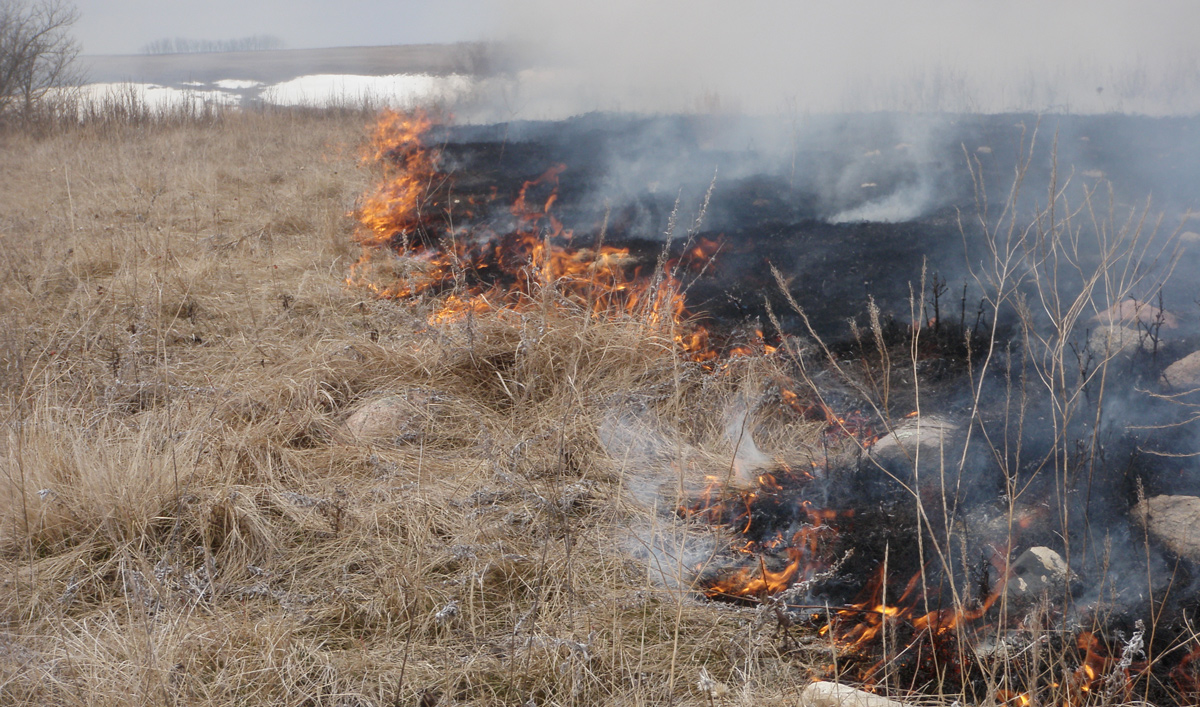At the Knife River Villages, the Indians’ ability to jump from one ice cake to another while pulling dead bison from the Missouri River amazes Clark. The Indians also burn the dead winter grass to promote the new growth.
A Feast of Drowned Buffalo
by Yellowstone Public Radio[1]Originally aired weekdays by Yellowstone Public Radio during the Bicentennial observance of 2003-2006. Narrated by Hal Hansen. Scripts by Whit Hansen and Ed Jacobson. Produced by Leni Holliman. © … Continue reading
Burning the Winter Grass
The Plains are on fire in view of the fort on both Sides of the River, it is Said to be common for the Indians to burn the Plains near their villages every Spring for the benifit of ther horse, and to induce the Buffalow to come near to them.
—William Clark
Riding the Ice
I observed extrodanary dexterity of the Indians in jumping from one Cake of ice to another, for the purpose of Catching the buffalow as they float down maney of the Cakes of ice which they pass over are not two feet Square.
—William Clark
Weather Diary
State of Ther. at rise
Weather wind at rise
State of Thermt. at 4 OClock Weather at 4 Ock Wind at 4 OClock State of the River 42 fair N W 52 [above 0] fair N W fall 11 in. a variety of insects make their appearance, as flies bugs &c. the ice ceases to run supposed to have formed an obstruction above.—
—Meriwether Lewis[2]To assist the reader, the editor of this web page has omitted the “Day of Month 1805” column and spelled out some abbreviations.
Fort Mandan is a High Potential Historic Site along the Lewis and Clark National Historic Trail managed by the U.S. National Park Service. The North Dakota Department of Parks and Recreation manages a modern reconstruction and the Lewis and Clark Interpretive Center located at US Hwy 83 and ND Hwy 200A.
Knife River Indian Villages National Historic Site is a High Potential Historic Site along the Lewis and Clark National Historic Trail managed by the U.S. National Park Service. A unit of the National Park System, the site is located at 564 County Road 37, one-half mile north of Stanton, North Dakota. It has exhibits, trails, and a visitor center.
Notes
| ↑1 | Originally aired weekdays by Yellowstone Public Radio during the Bicentennial observance of 2003-2006. Narrated by Hal Hansen. Scripts by Whit Hansen and Ed Jacobson. Produced by Leni Holliman. © 2003 by Yellowstone Public Radio. |
|---|---|
| ↑2 | To assist the reader, the editor of this web page has omitted the “Day of Month 1805” column and spelled out some abbreviations. |
Experience the Lewis and Clark Trail
The Lewis and Clark Trail Experience—our sister site at lewisandclark.travel—connects the world to people and places on the Lewis and Clark Trail.
Discover More
- The Lewis and Clark Expedition: Day by Day by Gary E. Moulton (University of Nebraska Press, 2018). The story in prose, 14 May 1804–23 September 1806.
- The Lewis and Clark Journals: An American Epic of Discovery (abridged) by Gary E. Moulton (University of Nebraska Press, 2003). Selected journal excerpts, 14 May 1804–23 September 1806.
- The Lewis and Clark Journals. by Gary E. Moulton (University of Nebraska Press, 1983–2001). The complete story in 13 volumes.




